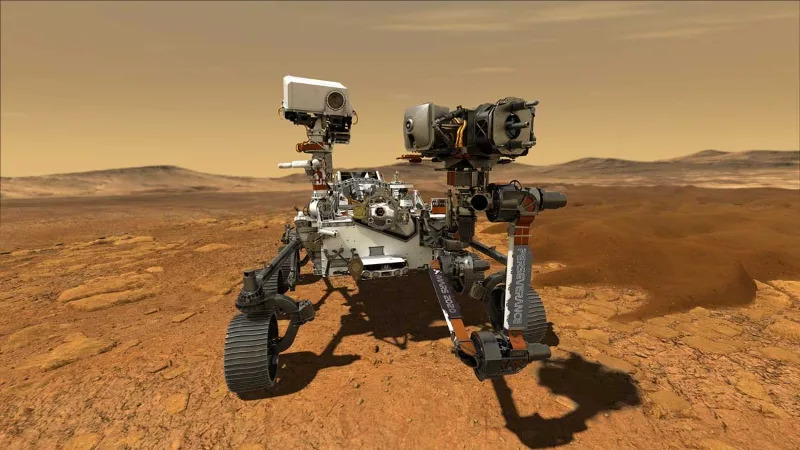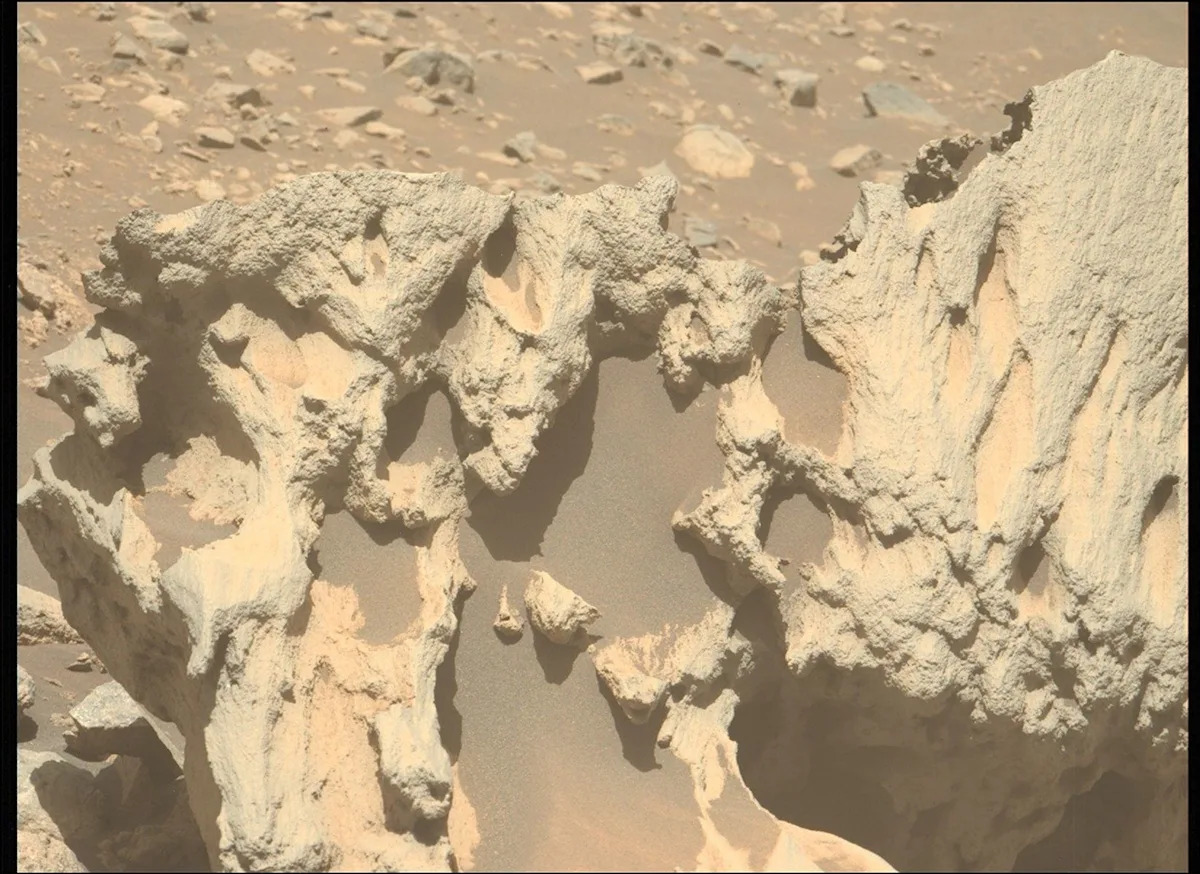Mars is full of surprises, but this one had scientists leaning closer to their multi-monitor arrays: a rock, about 31 inches across, sitting alone in a field of fractured bedrock in a region called Vernodden, that looked like it came from somewhere far beyond the red planet’s own backyard.
NASA’s Perseverance rover spotted the oddity in early September while surveying the terrain as part of the Mars 2020 mission. The team gave the formation a name: Phippsaksla. Up close, it doesn’t blend in with its surroundings at all. Instead of matching the usual local geology, the rock stands upright as if it were dropped there.
Later that month, a scan using the rover’s SuperCam instrument revealed that the formation is packed with iron and nickel, the element pairing most commonly found in iron-nickel meteorites, the kind that usually originate in the cores of large asteroids.
That composition is the big reason scientists think Phippsaksla may not actually belong to Mars. It may have crash-landed there long ago. NASA disclosed the discovery in a recent blog post, though the agency isn’t calling it a meteorite just yet (further testing is needed before they lock in that label).
A Four-Year Hunt for Ancient Clues
NASA’s Perseverance rover in Jezero Crater | ©Image Credit: NASA/JPL-Caltech
Perseverance has been wandering Mars’ Jezero Crater since February 2021, collecting rock samples and documenting anything that might hint at ancient life. The crater remains one of the mission’s most important sites because evidence suggests it was once filled with water around 3.5 billion years ago. If Mars ever hosted life, this is the kind of place where traces would linger.
Most of the rover’s findings fit neatly into the region’s known geological story. Phippsaksla doesn’t. And that’s the part scientists care about. A foreign rock sitting in an ancient lakebed could help them understand not just Mars, but the larger history of our solar system — what slammed into what, where materials came from, and how far meteorites travel before coming to rest.
For now, the rock stays exactly where it is, waiting for more tests and more answers. Perseverance moves on, but the image of that lonely, metal-rich boulder perched in Martian dust is already doing what all good discoveries do: raising more questions than it answers.
Sources: NASA, Daily Beast
Read the original article on GEEKSPIN.
Affiliate links on GEEKSPIN may earn us and our partners a commission.

